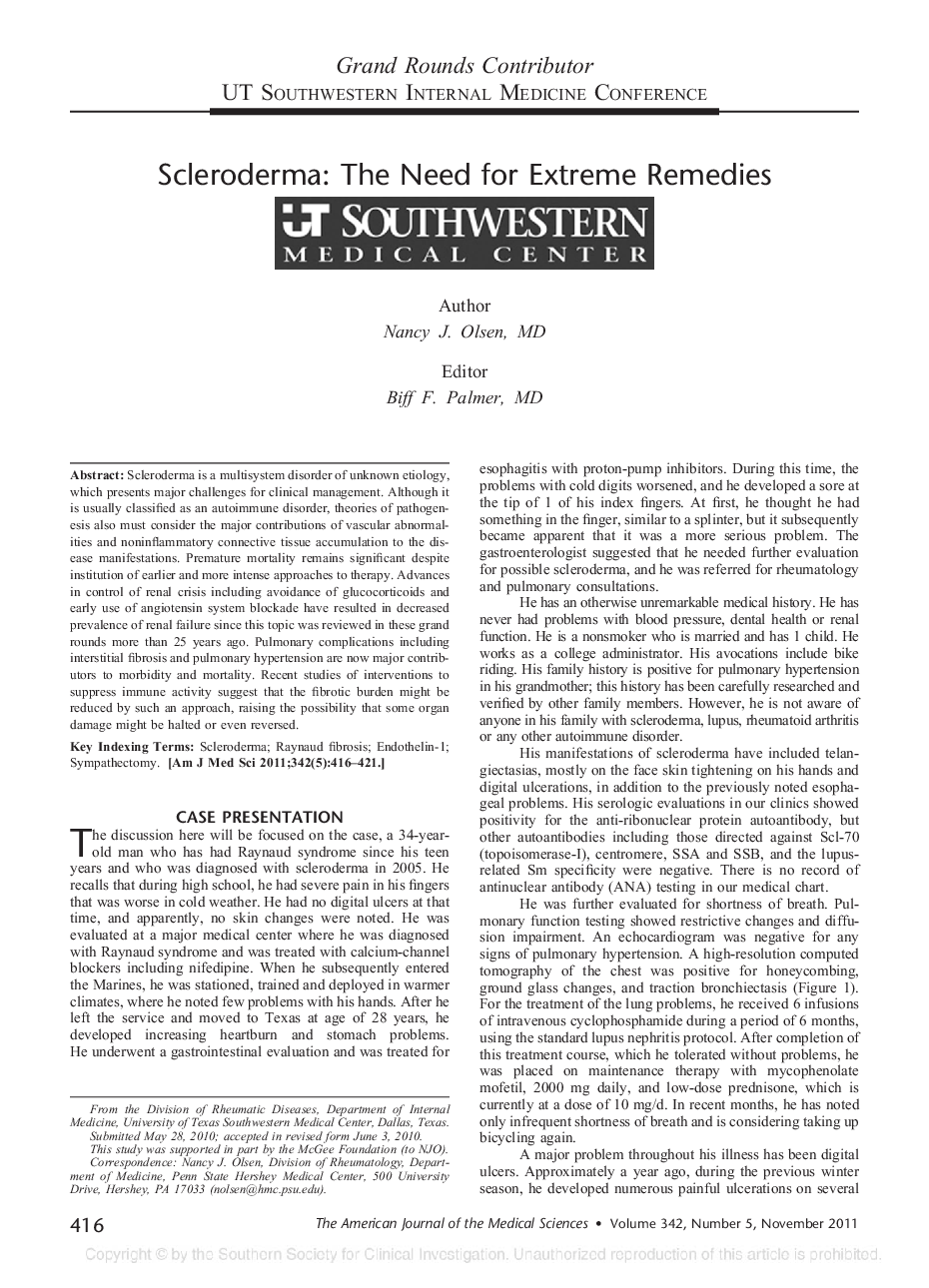| Article ID | Journal | Published Year | Pages | File Type |
|---|---|---|---|---|
| 2863726 | The American Journal of the Medical Sciences | 2011 | 6 Pages |
Abstract
Scleroderma is a multisystem disorder of unknown etiology, which presents major challenges for clinical management. Although it is usually classified as an autoimmune disorder, theories of pathogenesis also must consider the major contributions of vascular abnormalities and noninflammatory connective tissue accumulation to the disease manifestations. Premature mortality remains significant despite institution of earlier and more intense approaches to therapy. Advances in control of renal crisis including avoidance of glucocorticoids and early use of angiotensin system blockade have resulted in decreased prevalence of renal failure since this topic was reviewed in these grand rounds more than 25 years ago. Pulmonary complications including interstitial fibrosis and pulmonary hypertension are now major contributors to morbidity and mortality. Recent studies of interventions to suppress immune activity suggest that the fibrotic burden might be reduced by such an approach, raising the possibility that some organ damage might be halted or even reversed.
Keywords
Related Topics
Health Sciences
Medicine and Dentistry
Cardiology and Cardiovascular Medicine
Authors
Nancy J. MD, Biff F. (Editor),
